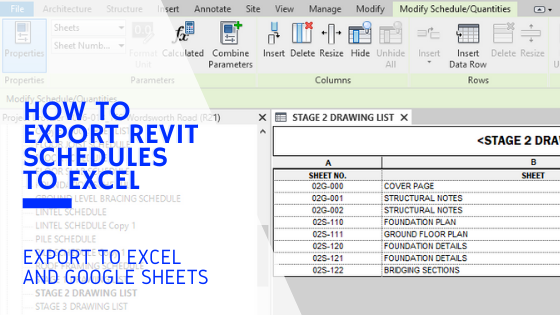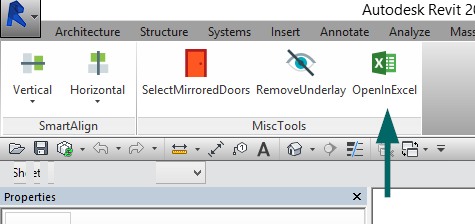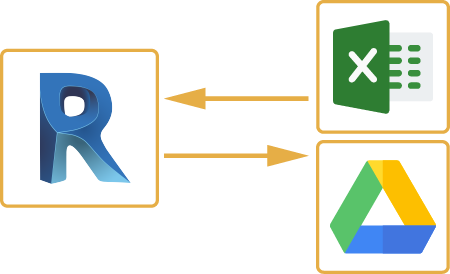Revit Tools for Every Task: Your Ultimate Style Friend
Wiki Article
Breaking Obstacles: Excel Importation Techniques for Advanced Revit Users
Are you a sophisticated Revit user aiming to take your skills to the following level? In this article, we will reveal you just how to damage barriers by leveraging Excel for importation in Revit. Discover numerous data importation approaches and master Excel combination to improve your Revit modeling capabilities. With our techniques and tips, you can conquer importation obstacles and come to be a true professional in utilizing Excel for your Revit tasks. Get all set to succeed in your Revit journey!Advanced Revit Users: Leveraging Excel for Importation
You can easily leverage Excel for importation as an advanced Revit customer. Excel is a powerful device that can significantly boost your process and performance in Revit. With its capacity to take care of large amounts of data and execute intricate calculations, Excel can be an important asset in handling and organizing your task details.One method to take advantage of Excel for importation is by utilizing the "Link Excel" function in Revit. This attribute allows you to link an Excel spreadsheet straight right into your Revit task, allowing you to update and synchronize information between both programs. This can be especially helpful when handling routines or tracking adjustments in your task.
One more method to use Excel is by utilizing the "Import/Export" attribute in Revit. This attribute enables you to import and export data between Revit and Excel, offering you the versatility to collaborate with data in both programs. You can import data from Excel into Revit to develop components such as wall surfaces, doors, or rooms, and you can likewise export data from Revit to Excel for more analysis or reporting.

Exploring Data Importation Methods in Revit Utilizing Excel
Exploring just how to import information from Excel right into Revit supplies reliable approaches for incorporating information. When you import information from Excel, you can flawlessly transfer data such as area timetables, material lists, and equipment information into your Revit project. This process allows you to save time and effort by avoiding manual data entrance.To import data from Excel right into Revit, you can make use of the "Import/Export" feature. This attribute allows you to map the Excel information areas to the equivalent Revit criteria, guaranteeing that the details is properly appointed within the model. By choosing the proper import alternatives, you can control just how the information is imported and exactly how it engages with your project.
Another method for importing data from Excel into Revit is by utilizing Eager beaver. Eager beaver is a visual programs device that incorporates with Revit and allows you to automate operations and jobs. With Dynamo, you can develop custom-made scripts that import data from Excel and manipulate it within your Revit task. This approach supplies even extra flexibility and personalization alternatives.
Grasping Excel Integration for Advanced Revit Modeling
Understanding Excel combination for innovative Revit modeling involves making use of efficient techniques to perfectly transfer information and automate jobs within your task. By using the power of Excel, you can enhance your Revit modeling process and save useful time. One crucial method is importing data from Excel spread sheets directly into your Revit version. This enables you to occupy parameters, such as room names or product amounts, with convenience. With a couple of simple steps, you can map the Excel columns to the matching Revit specifications and import the information precisely.Another useful technique is exporting information from Revit to Excel. This allows you to extract info from your design, such as routines or product amounts, and assess it in Excel using solutions, graphes, or other effective devices. By leveraging the capabilities of Excel, you can carry out complex estimations, develop personalized reports, and gain beneficial understandings into your project.
In addition to information transfer, Excel assimilation can automate recurring tasks in Revit. By creating macros or scripts in Excel, you can automate procedures like creating views, creating sheets, or using standard family members - revit tools. This not only conserves time however also ensures uniformity across your job
To understand Excel assimilation in Revit, it is important to understand the data structure and how Revit engages with Excel. By familiarizing on your own with the available tools and techniques, you can unlock the complete potential of Excel assimilation and take your Revit modeling to the next degree.
Conquering Importation Difficulties: Excel Techniques for Revit Specialists
When getting rid of importation difficulties, it's essential to be acquainted with efficient Excel methods that can profit specialists in Revit. As a sophisticated Revit user, you recognize the value of effortlessly importing data from Excel into your jobs. Nonetheless, you might encounter various challenges along the road. By using reliable Excel methods, you can overcome these difficulties and enhance your performance.
Another helpful method is making use of the "Transpose" feature in Excel. This permits you to convert data from rows to columns or vice versa. When importing information into Revit, this can be particularly read this post here useful when you have data in a vertical layout in Excel, yet you need it to be in a horizontal layout in Revit.
Moreover, utilizing Excel solutions such as VLOOKUP and INDEX-MATCH can significantly help in mapping data from Excel check out this site to Revit. These formulas enable you to look for specific values in Excel and fetch corresponding data from one more column. This can save you effort and time when importing big datasets right into Revit.
Excel Data Importation Idea for Advanced Revit Users
By acquainting yourself with effective Excel tricks and tips, you can improve your data importation procedure as a sophisticated user of Revit. Furthermore, using Excel's "Paste Unique" feature allows you to paste information from Excel right into Revit while preserving format, such as cell color or font style. One more useful trick is to use Excel's "Change and discover" feature to rapidly make modifications to your information before importing it right into Revit.
Verdict
You have now found out beneficial strategies for importing my explanation data from Excel into Revit as an innovative customer. By leveraging the power of Excel integration, you can streamline your modeling procedure and conquer any type of importation challenges that might emerge. With these methods and pointers, you will certainly be able to understand information importation and boost your Revit skills. Go in advance, break those barriers and succeed in your Revit projects!
When importing information right into Revit, this can be particularly valuable when you have data in an upright format in Excel, however you need it to be in a straight layout in Revit.
In addition, utilizing Excel solutions such as VLOOKUP and INDEX-MATCH can considerably aid in mapping data from Excel to Revit. In addition, making use of Excel's "Paste Special" feature allows you to paste data from Excel right into Revit while maintaining format, such as cell color or font style.
Report this wiki page